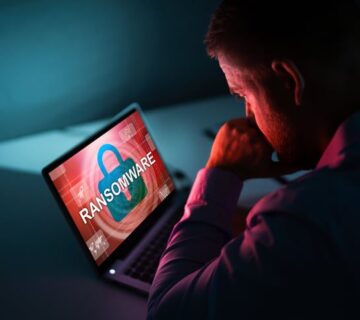Ransomware Attacks Increase Globally
A spate of ransomware attacks aimed at United States companies, government agencies, and critical infrastructure has raised serious cybersecurity concerns. Bad actors recently attempted to attack the Republican National Committee.
A recent supply-chain attack on Kaseya’s VSA software had the potential to compromise the security of up to one million companies. This breach highlighted the need to enhance the cybersecurity capabilities of individual companies. As a result, private and public organizations are working tirelessly in collaboration with the government to find a lasting solution to the crisis.
Other attacks demonstrated the vulnerability of America’s critical infrastructure. For instance, Colonial Pipeline stalled its day-to-day operations following a ransomware attack on its systems. The event resulted in widespread panic as consumers feared imminent gas shortages throughout the United States.
Colonial Pipeline reportedly paid millions of dollars of ransom money in cryptocurrency to cybercriminals. On the upside, the federal government recovered a portion of the ransom amount.
Interventions
Several federal agencies collaborated with other stakeholders to launch new cybersecurity initiatives. These interventions resulted in the launch of a portal to help American companies and communities find effective ways to stop ransomware attacks. StopRansomware.gov provides access to comprehensive ransomware resources. By taking advantage of the portal, organizations and individuals can learn to mitigate the risks posed by ransomware attacks.
Centralized ransomware resources eliminate the need for organizations and individuals to scour the internet for information. StopRansomware.gov aggregates information drawn from a wide selection of sources, including intelligence agencies, law enforcement, and tech experts.
Practical Measures to Stop Ransomware Attacks
Robust protections are necessary when looking to prevent ransomware attacks. In addition, organizations must maintain a proactive approach to maximize cyber defenses.
Here are specific interventions that can reduce the risk of attacks.
Develop Robust Cybersecurity Policies
You need to prepare for unexpected cybersecurity events by drafting robust policies. This approach ensures that your entire team, particularly the IT department staff, understands and follows specific security protocols. In addition, an effective policy defines roles and processes that apply in the event of an attack. Notifying specific stakeholders, such as vendors and partners, is an example of an essential step.
More importantly, your organization’s cybersecurity policy should guide staff on handling high-risk situations like suspicious emails.
Hardening Endpoints
By hardening endpoints, you close gaps that may exist in your systems. Default configurations often leave a few vulnerable points. For this reason, it is vital to rely on CIS Benchmarks, allowing you to implement standard configurations. In turn, you block malicious downloads and access to risky websites. These configurations help limit your organization’s exposure to ransomware risk.
Review Port Settings
To prevent ransomware from exploiting port settings and compromising your network security, consider restricting connections to trusted hosts. Leaving port 445 (server message block (SMB)) and port 3389 (remote desktop protocol (RDP)) open creates a vulnerability. You should review port configurations for your organization’s cloud and on-premise environments. Experts recommend disabling dormant ports.
Bolster Email Security
Bad actors typically compromise security by delivering ransomware via email. To counteract the threat, you need to secure email gateways. You can protect your infrastructure using advanced solutions, including post-delivery protection technologies. These technologies leverage artificial intelligence to detect and counteract phishing attacks.
You can count on the solutions to filter email messages through attachment sandboxing and URL defenses.
User Awareness Training
A vigilant workforce provides a crucial defensive layer against ransomware attacks. With user awareness training, your staff can learn how to identify and report suspicious files, emails, or activity. Additionally, employees can stop engaging in risky activities, such as visiting unsafe websites via their workstations.
This type of training enhances user awareness, thanks to phishing simulation sessions. Your system administrators use specially designed technologies to deliver mock phishing emails to staff members. In turn, employees can practice identifying suspicious emails.
Deploy Web Filtering Technologies
Web filtering and isolation measures help protect your infrastructure by blocking access to unsafe websites. The technologies can also detect and stop malicious file downloads. In doing so, you prevent ransomware attacks, which may come in the form of viruses.
When configured properly, web or DNS filters can block malware and ads more aggressively. Another useful measure is deploying isolation technologies capable of isolating users’ browsing activity through secure servers. Isolation ensures that the content delivered to users’ workstations is safe. Malicious software executed in the secure server cannot leave the containment area, protecting your organization’s infrastructure.
This approach is undoubtedly one of the most effective ways to prevent ransomware attacks.




No comment